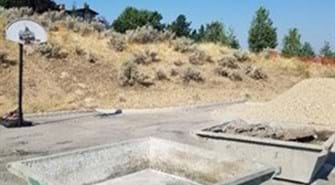Washout at Construction Sites
When not contained properly, concrete washout from construction zones can release corrosive wastewater laced with toxic metals into the ground, streets and gutters around construction sites. This concrete washout has a pH-level similar to that of Drano, and can combine with stormwater to flow into the Boise River where it can damage local aquatic ecosystems. Soil chemistry is also altered when wastewater mixes with soil, inhibiting plant growth and contaminating groundwater. Despite industry and regulatory efforts to properly manage this construction site waste product, uncontained concrete washout is an ongoing environmental crime that the construction community must address.
Rinsing and washing concrete chutes and equipment without leak-proof containment violate Boise’s construction site erosion control and stormwater management ordinances. ESC permit holders are required to provide a concrete washout facility or arrange to have the concrete delivery provider or pump truck washout at their own facility, or bring a portable washout of their own.
Washout Containment
Washout containment comes in many forms, including:
- A deep basin wheel barrow
- Sturdy plastic or metal tub
- A line, reinforced cardboard box such as an Outpack or lined wood box
- A pit with a secured visqueen/poly lining (> 10 mil)
Several services in Boise also provide washout and haul away. Please check with your ESC inspectors if you have any questions about options.
Once the washout is set up, its location should be clearly communicated to the onsite foreman and the delivery or pumping service. The washout must be monitored to prevent spill or overflow, as well as unauthorized use. Allow the washout to dry by evaporation, or use a sludge drying agent to solidify and neutralize the waste for hauling it to a recycling facility or dump. If the washout is dug into the ground, attempt to cover it during wet weather to prevent runoff from flowing into it.



